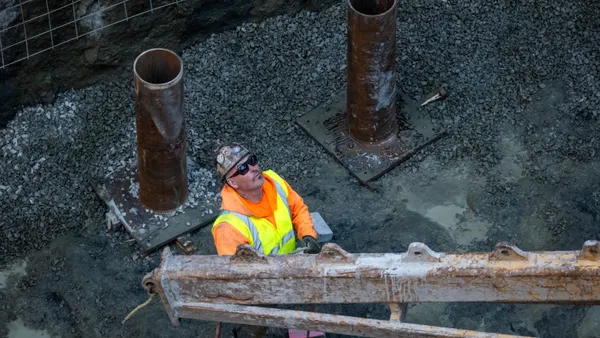Dive Brief:
-
Softwood lumber prices rose 2.2% in May, according to a National Association of Home Builders analysis of Bureau of Labor Statistics data. OSB prices rose 3.3% during the month.
-
The last time softwood lumber prices were this high — in September 2004 — the U.S. and Canada were in the middle of a trade dispute (similar to the one today) that had pushed prices up 38.5% since 2001, when a trade agreement between the two countries expired.
- Today, prices for the category are up 12.9% since January 2017 and 21.6% over January 2016, driven almost entirely by the current softwood lumber trade dispute.
Dive Insight:
Overall, construction material price growth was flat in May after five-straight months of increases. Among product categories, however, lumber, plumbing, steel, iron and prefabricated structural metal products were up for the month; a drop-off in crude petroleum and unprocessed energy materials balanced gains in other areas.
Speculation around tariffs on softwood lumber products imported from Canada have been a major contributor to the recent price growth in the category.
One of two expected actions related to Canadian imports has been seen so far. In April, the U.S. Department of Commerce announced an average preliminary 20% import tax on Canadian softwood lumber, with producer rates from 3.02% to 24.12%. The move intends to help U.S. mills compete with Canadian producers, which source timber from government-owned land and so can get product at a lower rate than Americans, which get most of their product from private land.
The second action, which concerns whether Canadian producers are selling product in the U.S. at below-market rates, is expected later this month. A combined rate will be set this fall, according to the CBC.
The deal in question between the U.S. and Canada expired in October 2015 and was followed by a year-long moratorium on legal action while the two countries worked out a new agreement. That new agreement has yet to happen, and the industry has since faced uncertainty over its softwood lumber supply — which includes the wood used to frame homes — with mills raising rates to help take the edge off the impact of any eventual action.
The U.S. imports one-third of its lumber supplies and more than 95% of that stock comes from Canada, according to the NAHB. However, reports say the U.S. is looking to other sources for imports and Canada is exploring export options elsewhere.













